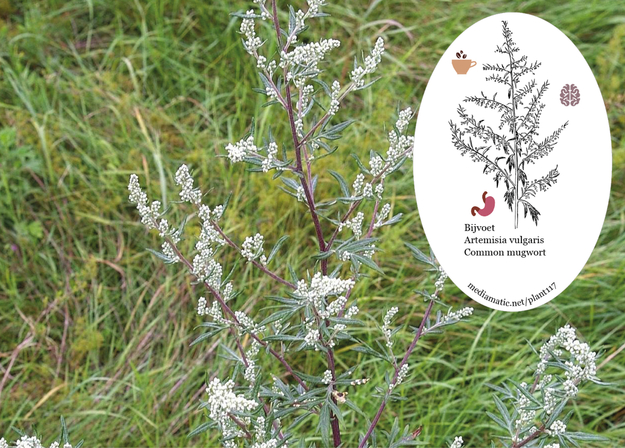Mugwort has a long history of use in herbal medicine especially in matters connected to the digestive system, menstrual complaints and the treatment of worms. It is slightly toxic, however, and should never be used by pregnant women, especially in their first trimester, since it can cause a miscarriage. Large, prolonged dosage can damage the nervous system. All parts of the plant are anthelmintic, antiseptic, antispasmodic, carminative, cholagogue, diaphoretic, digestive, emmenagogue, expectorant, nervine, purgative, stimulant, slightly tonic and used in the treatment of women's complaints. The leaves are also said to be appetizer, diuretic, haemostatic and stomachic. They can be used internally or externally. An infusion of the leaves and flowering tops is used in the treatment of nervous and spasmodic affections, sterility, functional bleeding of the uterus, dysmenorrhoea, asthma and diseases of the brain. The leaves have an antibacterial action, inhibiting the growth of Staphylococcus aureus, Bacillus typhi, B. dysenteriae, streptococci, E. coli, B. subtilis, Pseudomonas etc. The leaves are harvested in August and can be dried for later use. The stem is also said to be antirheumatic, antispasmodic, and stomachic. The roots are tonic and antispasmodic. They are said to be one of the best stomachics. They are harvested in the autumn and dried for later use. The leaves, placed inside the shoes, are said to be soothing for sore feet. The compressed dried leaves and stems are used in moxibustion. Another report says that the down from the leaves is used. Source: https://pfaf.org/
Common mugwort
Artemisia vulgaris
Find more about this plant on Wikipedia.

Common Mugwort - Artemisia vulgaris Author: Christian Fischer